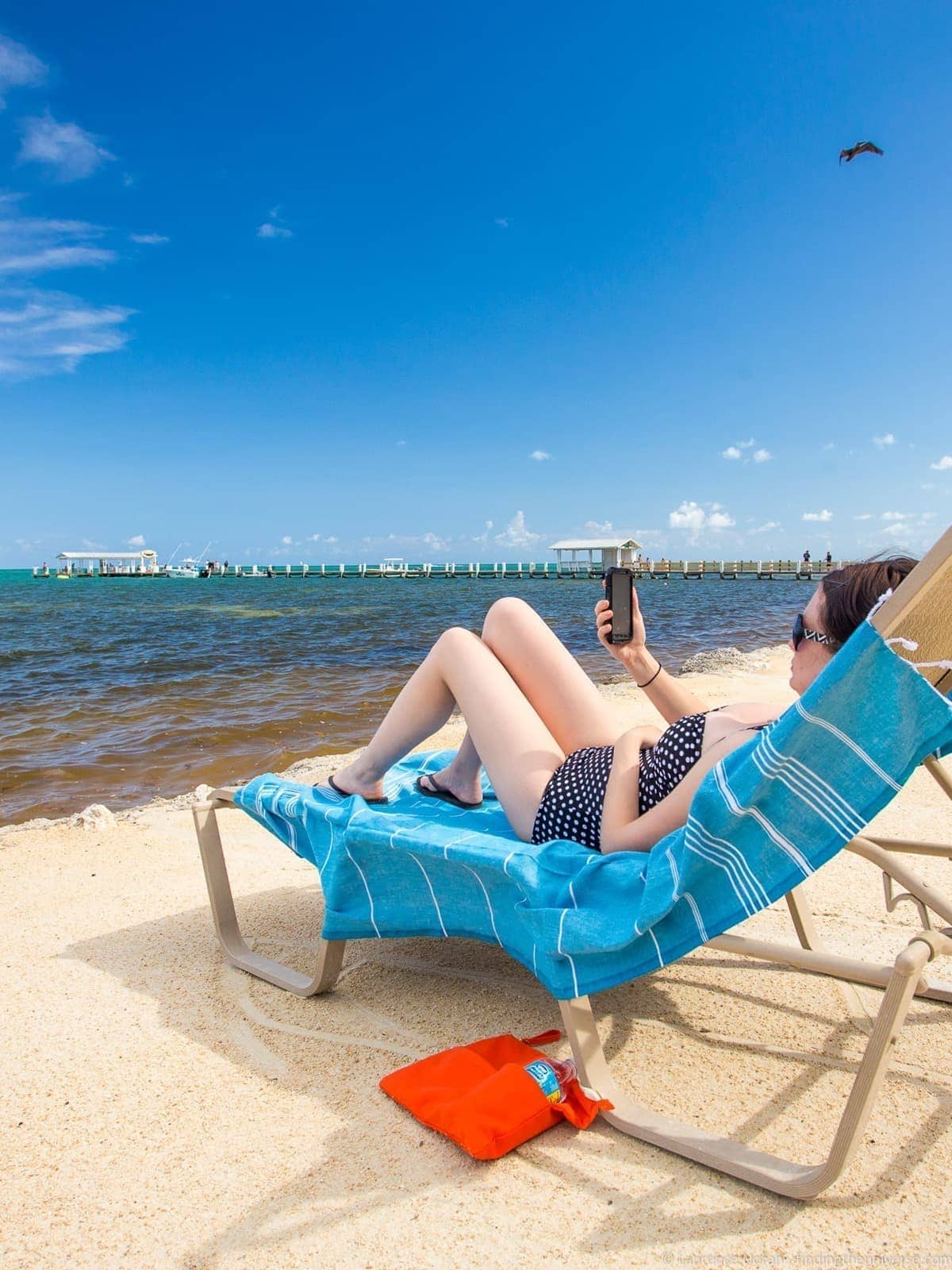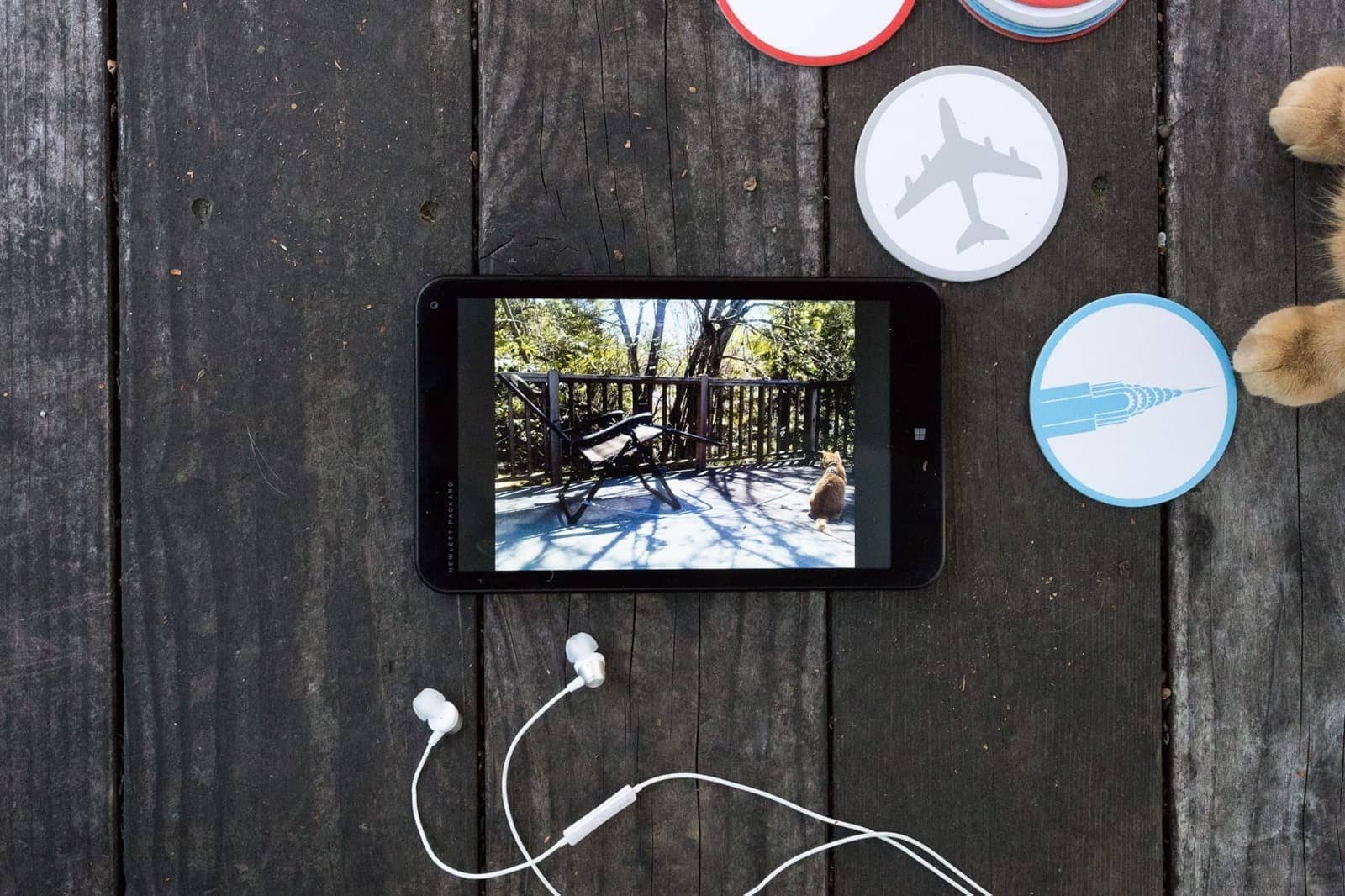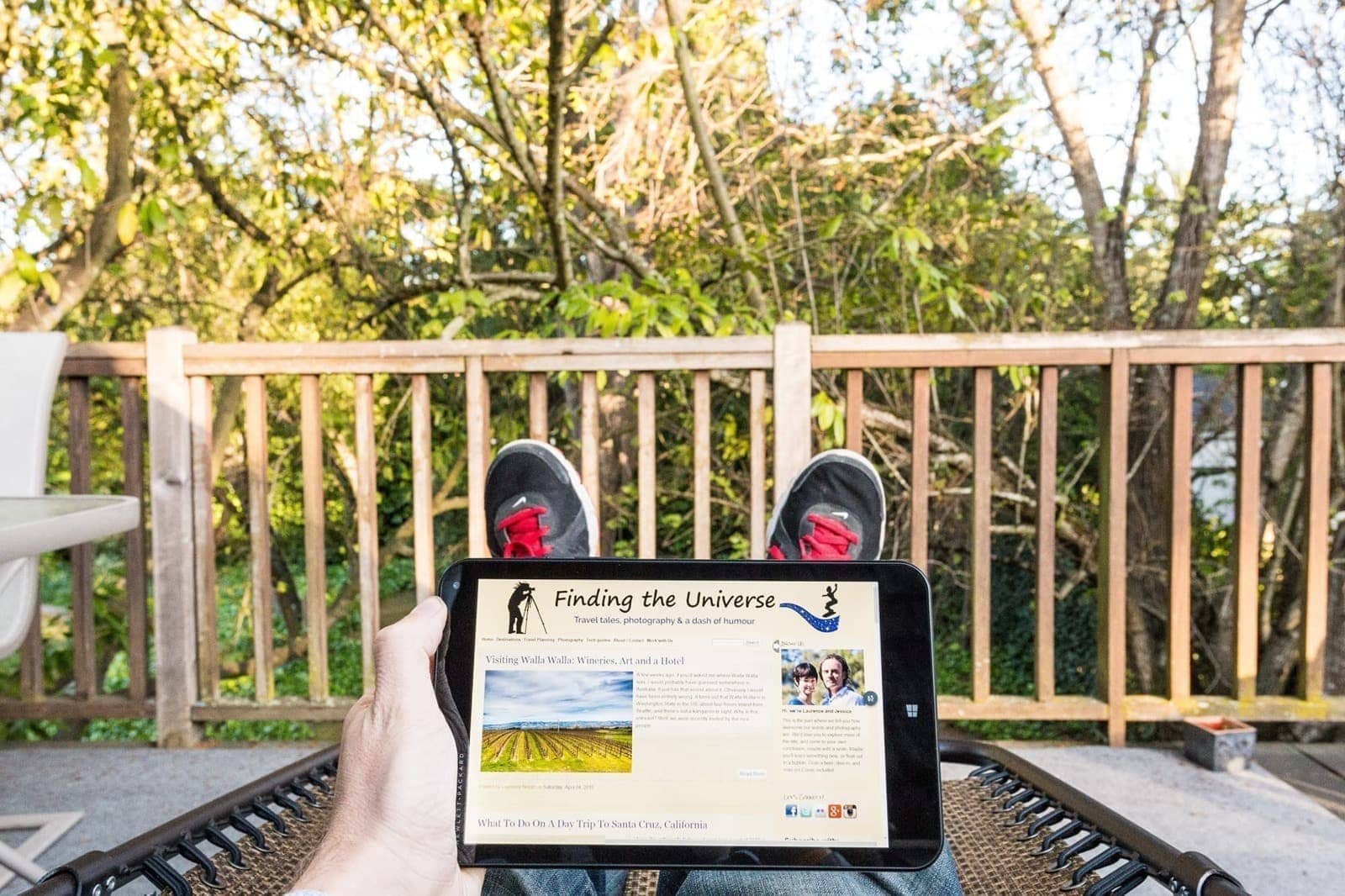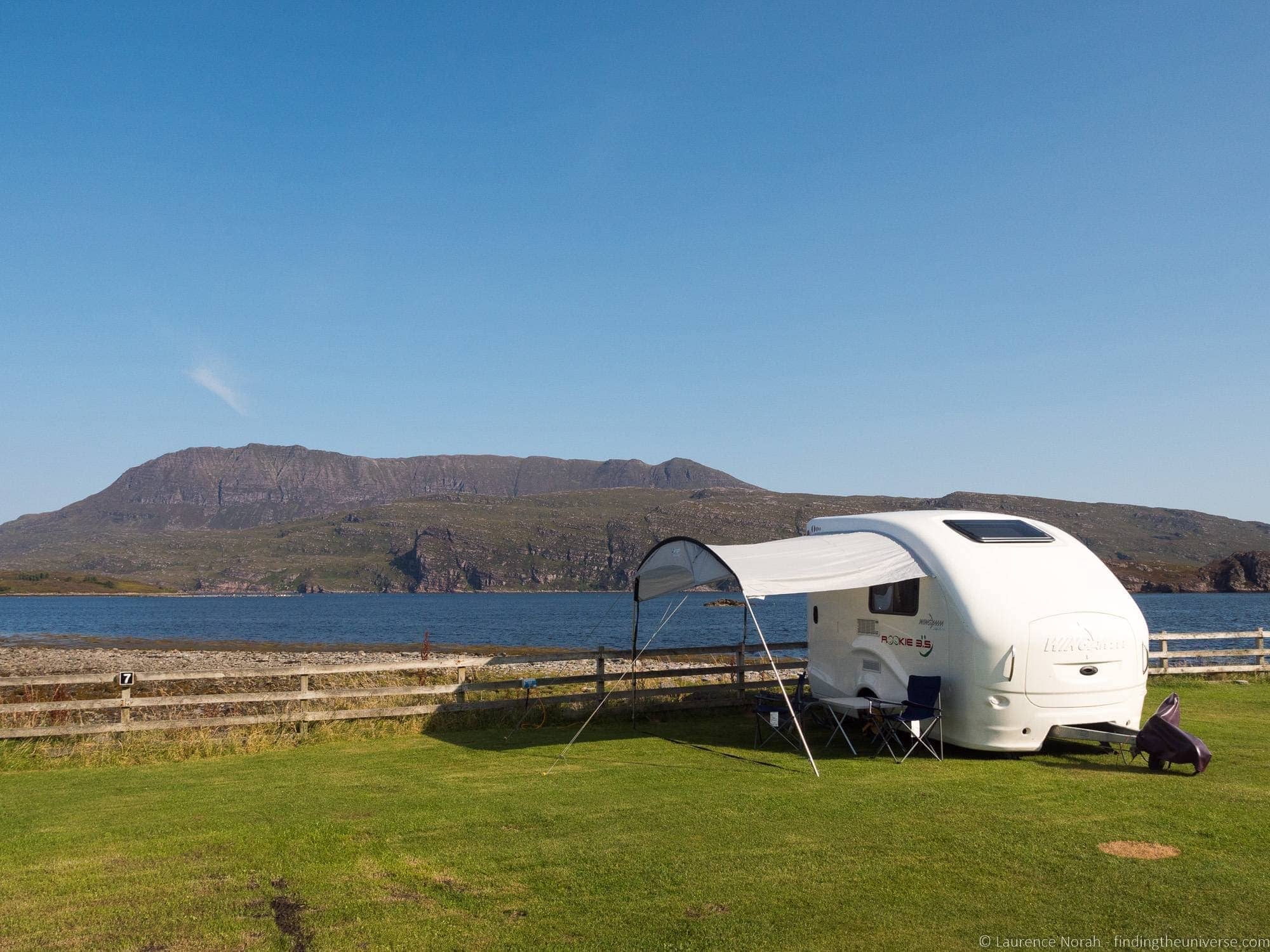Internet Access when Traveling: How to Get Online On The Go
Internet Access when Traveling: How to Get Online On The Go
We’ve all heard horror stories from people who’ve gone away on a trip and then returned home to a huge bill thanks to their mobile phone roaming on data networks when they’re away.
The good news is, this doesn’t have to be you. There are lots of options for getting internet access when you travel, ranging from entirely free through to more premium options.
In today’s post I want to help guide you through the options available to you when you travel for getting online.
This will include options for getting online on your mobile phone, as well as on any other devices you might have with you, including tablets and laptops. I’ll cover options that work for a variety of travel styles, including options for getting online in an RV.
My guide will focus purely on internet access while travelling, rather than texting or calling, although some of the solutions below will also work for texting and calling.
These are based on our personal experiences travelling through multiple countries each year, and are listed in order of our personal preference for how we get online when travelling. We’ve also included any discount codes that we’ve been able to find from suppliers for you guys.
The Best Options for Internet Access when Traveling
Below are all the options you have for getting online when travelling abroad. These cover a wide range of options and we think at least one of these options should work for you!
1. Use Your Mobile Provider
The first thing to do is check with your mobile phone company if they offer any form of roaming as part of your package for the countries you are visiting – often referred to as an international plan. This might be the easiest and cheapest way to get online when you travel.

In the US, T-Mobile users on a qualifying plan have access to 2G speeds in over 140 countries with no additional charges.
Whilst 2G isn’t super-fast, it’s certainly good enough for the essentials like e-mail, messaging, and getting directions.
Google’s Fi offering is also excellent, letting you use your data allowance pretty much everywhere you go if you are on the appropriate plan.
Some mobile providers, like Three in the UK, also let you purchase overseas roaming packages on a day-to-day basis. These let you get online on the days you really need to.
This can be cost effective if you only need to get online on a small number of days, but can add up over a prolonged period, in which case you might want to investigate the other options below.
Note that if you aren’t planning on using your provider’s mobile data when you go abroad, it’s really important to disable data roaming before you leave, to avoid running up hefty charges when you arrive in your destination country. Here’s a guide on how to do that for Android, and one for iOS (Apple).
Advantages of using your mobile provider: If your provider supports roaming at no or minimal cost in the destination you are visiting, this can be the easiest and most cost-effective way to get online with minimum cost and effort.
Disadvantages of using your mobile provider: Even if your provider supports it, speeds may not be as fast as you would get with the other solutions below, due to throttling by your provider.
2. Buy a SIM Card for your trip
Depending on the country you are travelling to, you might find the most cost-effective way to get online when you travel is to purchase a SIM card for your device for the country you are travelling to. This is generally what we do if possible, although some countries make it hard to buy local SIM cards due to local regulations.
You can either do this on arrival, or in some cases, you can buy the SIM card before you leave – such as this option for travellers from the USA to Europe. You can see more options here.
Once you have the SIM card in your phone, you can just use this for your data needs.
For this to work you need an unlocked handset – you can check with your carrier if your handset is unlocked, and they should be able to assist you with unlocking it if you are allowed to.
If your device is unlocked, then you will be able to put any SIM card that you like into it. This has the advantage that you’ll be able to get the maximum speeds available in that country as the provider will be local, and you’ll also generally be able to do things like tether other devices to your handset.
Tethering allows you to set up your phone as a WiFi hotspot, meaning you can connect your laptop to the internet through your device connection. See this guide for instructions on setting up a WiFi hotspot on Android, and this guide for how to do it on Apple iOS devices.

Depending on the country you’re visiting there will be different packages and providers available. We’re big fans of Three for visitors to the UK – their Pay as You Go SIMS are great value for visitors, and they can be picked up on arrival in many stores as well as airport kiosks.
If you are travelling from the USA, you can pick up a Three SIM card in advance of your trip here, which comes preloaded with data.
For full details on SIM cards for a wide range of countries across the globe, take a look at the Pre Paid Data SIM Card wiki site, which has all the advice you could ever need on the best SIM card options for the majority of countries in the world.
For short trips, or for trips where you are hopping across many countries, purchasing a SIM card everywhere you go might be more hassle than it is worth.
The exception is for travel in the EU – regulations introduced in June 2017 mean that providers can no longer charge for roaming in these countries, so a SIM card bought in one EU country should work across all other EU countries without additional charge.
Also be aware that some countries make it quite hard to purchase a SIM card, requiring you to have the equivalent of a social security number or other local government issued unique identifier in order to activate the service. In these countries, you’re probably better off investigating other options.
Advantages of buying a local SIM card: Buying a SIM card abroad will usually give you the fastest local speeds available at the most cost-effective price, and is a great option if you have an unlocked phone, and will be in the country for more than a day or two.
Disadvantages of buying a local SIM card: A local SIM card will take a bit of effort on your part to find, depending on the country you visit, and activation can sometimes be tricky. It also requires an unlocked handset to work. For short stays, or multiple country trips (excluding the EU), it’s probably not worth it. Also, when you take your home SIM card out, you won’t receive calls or texts to your home number.
3. Use a Mobile Hotspot
A mobile hotspot is a standalone device which connects to a cellular network for data, and creates a local WiFi hotspot that you can connect your devices to.
This lets you get all your devices online (handy if you have multiple people travelling together!), and means you don’t have to worry about unlocking your phone. Some even offer 5G speeds, meaning you’ll get super fast speeds as well.
This is possibly the easiest way to get online when travelling. A mobile hotspot is also an option if you are trying to get online in an RV. Some mobile hotspots allow you to connect an external antenna to boost your signal, which you can mount on your RV for improved reception.
The downside to all this awesome is that for connecting a single device, a mobile hotspot will usually work out to be more expensive than the other options, and they don’t offer voice or text capabilities – just data. We would definitely advise checking with your carrier first to see if they offer data roaming packages for your phone, as these often work out cheaper if budget is a concern.
However, if data and ease of use is what you are after, and you have multiple devices that you want to connect (if you’re travelling as a couple or family for example), then these can be a cost effective and very easy to use option.
You have two main options for mobile hotspots. You can rent them for one-off trips, or you can buy one, and then pay as you go. We summarise these options below, and we also have a full guide to the best mobile hotspots for you to read if you are interested in one of these devices.
Option 1: Rent a mobile hotspot for travel
For rentals, prices vary depending on where you are travelling and how much data you want to use. In general you are looking at around $7 – $12 per day of travel for unlimited internet. Do check the terms and conditions on your rental though as many providers throttle speeds after a certain amount of usage each day (usually 1GB).
There are a number of providers we recommend you look at. Prices vary depending on the country or countries you are visiting, so we suggest taking a look at a few options before settling on one.
First, we recommend GlocalMe. They have a range of data plans supporting 4G speeds around the world, with prices starting from just over $5 a day.
Next up is TravelWiFi. They offer free delivery of their device to your home before you travel, as well as very competitive rates. For some countries you can pick up and drop off the device as well when you get to the destination, which can be convenient. These start at around $7 day for 4G.
We also have a discount code for TravelWifi, use discount code “findingtheuniverse” for a 5% discount on their prices. They also offer the option to purchase the device out right and then pay as you go for data.
Another option is mywebspot. They offer 4G data speeds in a number of countries around the world, with a daily fair usage policy of 1 GB in Europe and the USA, 2GB in Mexico, and unlimited 4G in SE Asia, Japan and China.
Prices for mywebspot are around $11 / day for fast 4G speeds, although this varies by destination, and they have a variety of ways you can get the device before your trip, many with free delivery.
Another option for visitors to Europe looking to rent a device is Hippocketwifi. They currently focus on Europe exclusively, and they have a number of competitive packages available, depending on how much data you need and for how long.
Speeds are at 4G, and prices start at around $7 a day if you rent for two weeks, with a 1GB data cap per day. They also offer more expensive unlimited plans. If you are just visiting France, they have a specific package at a very competitive price.
We have a discount code that will give you 5% off your Hippocketwifi rental – just enter coupon code “TRAVELCATS5” at checkout in the coupon code section to claim.
Option 2: Buy a mobile hotspot for travel
If you think you are going to be taking a number of trips, or one longer trip, it will likely be more cost effective to buy a device that you can just add data to. This is also the case if you are planning on fitting a device with external antenna to an RV.
If you are looking to purchase a hotspot device for travel, prices for the device are generally in the region of $50 – $300. Prices vary, and some come with data.
First, we again recommend GlocalMe. They have a range of products, and we particularly like the GlocalMe DuoTurbo. This comes with a touchscreen and offers a range of reasonably priced data packages. You can also add your own SIM card if you prefer. This might be a better option for sporadic use where you want to pay as you go rather than by the day.
Another option to check out is My Webspot. They have a service where you can buy their device outright and get a pack of 20 1 day 4G passes (a value of around $220 at current prices). For regular users, this can be a good option. See that here.
There are also a number of other 4G wireless hotspots available, many of which you can add a local SIM to when you arrive in a destination.
We currently have and travel with this Netgear 4G capable wireless hotspot, which also works as a travel router and portable charger. Note that this doesn’t work with every SIM card in the world, so you will want to check with Netgear prior to travel to be sure.
Advantages of using a mobile hotspot: A mobile hotspot will let you connect multiple devices at high speeds, perfect for a family trip together.
Disadvantages of using a mobile hotspot: It’s another device to carry with you and keep charged. It’s also not the cheapest option. In addition, you obviously need to be in range of the hotspot for it to work, so if your group splits up this could cause issues!
4. Use a specialist roaming SIM
If your operator doesn’t offer good roaming prices and you don’t want the hassle of switching SIMs in and out of your phone as you travel, you might want to look into a solution that is designed for travellers – a travel SIM.
These can be a more expensive option than getting a local SIM card, depending on destination, but they can also be more convenient depending on your situation.
We have tried a few of these in our travels. We would recommend checking out OneSim, Holafly or Airalo. Which will be best for you will depend on your destination.
Generally, we have found Airalo offers some of the better deals although a lot will depend on where you are traveling and how much data you want.
Airalo
Airalo (get $3 credit with code LAUREN8516) offers an eSIM solution. This is a virtual SIM card which is supported by many phones including recent Android and iPhone models. If your phone is compatible, an eSIM works in parallel with your existing SIM, so you can still receive texts or calls when abroad on your existing number.
Airalo has data packs for over 190 countries worldwide. You can pick up an eSIM for a single country, a region (i,e, Europe, Africa) or for global use. Just be aware the global SIM only covers around 90 countries, so you will want to check your destinations are on the list.
Airalo offers some of the better value SIM cards for travel, even compared to buying a local SIM, so this would be our first port of call if you have a supported phone model. An eSim also has the advantage that your current phone number will continue to work. This is helpful if you receive codes for things like online banking as it will save you swapping out SIM cards.
OneSIM
The OneSim prepaid international SIM card includes two phone numbers, as well as free incoming calls to an EU number in 162 countries. Mobile data is available from 1c/ MB, with bundles available offering up to 10GB of data.
They offer a universal sim card which can be used in over 200 countries, as well as an option that focuses on providing better value in Europe.
Holafly
Like Airalo, Holafly offers an eSIM product. Holafly offers a range of data packages for destinations around the world. Their eSims can also be delivered instantly via e-mail, so you don’t have to wait for delivery if this is a last-minute purchase. Their pricing is reasonable for larger amounts of data.
Price Comparison
As a quick price comparison, here are some data packages. Prices are correct as of May 2022.
- UK, 10GB, 30 days. Airalo: $22.50. Holafly: $49. OneSIM: $200
- Europe, 10GB, 30 days. Airalo: $37. Holafly: $49. OneSIM: $200.
- USA, 10GB, 30 days. Airalo: $26. Holafly: $67 (20GB). OneSIM: $200
Of course, you will want to plug in your own information in terms of destination, duration and data required, but this should give you a rough idea of cost.
In my research Airalo most often comes up with the best value plan but this can vary. It’s also one of the few travel focused SIMs that is competitive even against buying a local SIM in some scenarios. You can also get a $3 credit with code LAUREN8516 when signing up for further savings.

Advantages of using a specialist SIM: A specialist travel SIM is usually a really simple option that will let you get online quickly and easily at high speeds, without having to worry about roaming fees. It’s perfect for travelling across multiple countries, and will just work as soon as you arrive in the country. If you’re looking for the easiest option, this is likely it.
Disadvantages of using a specialist SIM: A specialist SIM can be one of the more expensive options for getting online, and requires an unlocked mobile. In the case of an eSIM, you will need a handset which supports eSIM technology.
5. Consider Satellite Internet
This option is primarily for those of you who are looking for options for getting online when traveling in an RV, boat or other type of transport which offers space for larger devices.
In this situation, you have a bit more choice. This is because you have access to more physical space as well as a power source. Your average traveler is unlikely to want to travel with a satellite dish in their luggage, but an RV or boat owner can easily afford the space for such a setup.
Whilst many RV owners use a mobile hotspot device, these are not without their downsides. The main downside is that they require cellular coverage to work, and many remote locations just don’t have cellular service. Whilst you can boost the signal with an external antenna, if there’s no signal to boost this won’t help!
This is also the case with boat owners, as the open sea tends to be without cell towers!
The other issue relating to cellular coverage is that in very popular locations the cell networks can overload. You will notice this if you ever attend a large event with tens of thousands of people – the internet will slow to a crawl or stop working altogether. As many people attend large events in their RVs, this problem also affects their mobile hotspots which use the cell network to send and receive data.
The solution to all this is a satellite internet connection. This consists of a satellite receiver that you normally mount on or near your RV, which points to a satellite in the sky. This provides the internet.
This gets around the issue of not having a signal, because satellites can cover a vast area. As long as you have a clear view of the sky, you should be able to get connected in most locations (although you’ll want to check coverage of your provider of course).
Currently, satellite usage is also not very common, so there is a low chance of the signal being overloaded.
The downside to satellite internet is that it tends to be one of the more expensive options. Some options can be slower as well. However, costs are coming down and speeds are going up, and more companies are rolling out satellite options. The availability of satellite providers will vary depending on your country. In the US for example, consider Starlink, HughesNet, Viasat and DISH.
Starlink is the standout option as it uses satellites which are closer to earth and thus is able to offer faster speeds and more data. It’s also relatively cost-effective compared to the other satellite options. They also have an RV specific satellite service which offers pay as you go monthly billing, and the ability to pause and resume the service when you want.
Just be aware that Starlink has proven very popular so depending on the service you choose and your location you might have to join a waiting list. The good news is that other companies, including Amazon, are due to launch competing services in the coming years.

6. Just use WiFi for Internet Access
If all the above sounds like a lot of work, and you don’t think you really need to be online every minute of the day, then our suggestion would be just to use free WiFi networks as you go.
In many countries around the world you can find free WiFi all over the place. In the UK for example, most restaurants, bars, museums and many public spaces as well as public transport operators offer easy, hassle free connections.
The same can be said for the US and much of Europe. Reliable locations to find WiFi include McDonalds, Starbucks, and many others. Your hotel or lodging will nearly always include free WiFi as well – thankfully we’re almost past the days when hotels feel they can charge for WiFi access.

You might also want to consider investing in a wireless range extender, also known as a travel router. This is a small device that can boost a weak wireless signal, allowing you to connect your devices from further away to something like a hotel or coffee shop that you might not have been able to previously connect to.
We’ve done a round up of the best travel routers to give you an idea of what these devices do and how they work. Our current suggestion is the this TP-Link Travel Router, which is well reviewed and very cost effective.
A travel router can also be used at home, but if you are trying to improve your home WiFi, check out our guide to the best home WiFi routers as well.
Advantages of using WiFi: This definitely one of the easiest option for internet access when traveling, because all you have to do is disable your phones data roaming and then just find WiFi as you go. It’s also the cheapest option, and WiFi is usually faster than mobile data in many cases. If you don’t urgently need the internet at every waking moment, this is a great option.
Disdvantages of using WiFi: WiFi is not yet ubiquitous, so you won’t be online all the time. There are also some security risks to using unsecured wireless networks, so you are likely still going to have to pay for a VPN.
Summary of Best Options for Getting Online When Traveling
Here’s a quick summary of your main options for getting online when traveling:
- If your carrier supports data roaming, check out what packages are available and the prices in the country you are traveling to.
- If your phone is unlocked or supports eSIM technology, look at either purchasing a local SIM card or using a travel SIM service. In our experience, Airalo offers good value in the eSIM space.
- If you have multiple devices you want to connect, think about using a mobile hotspot. You can rent or buy these.
- If you are trying to get online in an RV, consider a satellite internet service like Starlink
- If you are not bothered about being always connected, save money by connecting to free WiFi hotspots when you travel
Don’t Forget the VPN!
However you choose to connect to the internet when travelling, we highly recommend you use a VPN to keep your data secure. This is especially the case when connecting to public WiFi networks, but it’s a good habit to get into regardless of how you connect to the internet.
You definitely don’t want your browsing data to be exploited as you browse, and a VPN will protect you from hackers looking to sniff out your sensitive data, from passwords to banking information.
We have a detailed guide to why you need a VPN and the best travel VPNs here. However, in brief, here are some VPN services we recommend you check out to keep your data safe when travelling.
-
– PIA offers one of the most competitively priced VPN services on the market, and have all the features you need from a VPN – lots of servers to choose from, support for streaming platforms, and support for all the main devices and operating systems on the market, from smartphones to laptops and tablets. Check them out here. is o ne of the most highly reviewed and respected VPN services in the world . They offer competitive pricing, especially on their multi-year plans, and by connecting through their VPN software on your devices you’ll know your sensitive data is safe from prying eyes. We also have a NordVPN discount code. If you enter “travelcats” at checkout you can save 65% on the 2 year plan.
We definitely recommend investing in a VPN, either one of the above, or one you find yourself, to protect your data when travelling and browsing the web.

Further Reading
And that sums up our guide to getting online when traveling! As you can see, there are plenty of options for you, ranging from free through to more premium solutions.
The best option for you will vary depending on your destination country, budget, and number of people travelling, but certainly we believe that one of the options above will help you get online and avoid nasty bill shock when you get home!
We’ve also got a lot of other resources you might find useful, including the following.
- Depending on your travel plans, you might need a travel router. See our guide to travel routers to help you decide which is right for you.
- We also have a full guide to the best mobile hotspots for you to read if you are interested in one of these devices.
- Fast internet access at home is also important! See our guide to the best home wifi routers for improving your home internet speeds.
- Staying safe online when you travel is important. See our guide to the best travel VPNs for tips on keeping your personal data safe when you’re on the road.
- You’re going to need to power all your devices when you travel – see our guide to the best travel adapters
- If you are heading out onto the road and looking for a laptop to get some work done, see our guide to the best laptops for photo editing
- Thinking of buying a new camera? See our guide to the best cameras for travel
And that’s it! As always, if you have any feedback about the post, or questions for us, just pop them in the comments below and we’ll get back to you as soon as we can.
Enjoyed this post? Why not share it!
Home » Travel and Packing Tips » Travel Tips » Internet Access when Traveling: How to Get Online On The Go
How to get internet when traveling from usa to europe

One of the most common problems travelers are facing when traveling abroad is “How can I stay connected to the internet during my trip?”. It is now easier and cheaper to get wifi in Europe and abroad than it used to be. You just need to know your options.
Nowadays, every traveler needs his smartphone/tablet/laptop. Getting the internet abroad is a top priority. For some users, it will be for staying in touch with family. For others, it will be to kill time during long transfers browsing Facebook or use maps if you get lost.
4 Ways To Get WiFi In Europe
1. Get an international/global plan for Europe with your provider
Just going online on your provider’s website and getting a global plan is probably one of the easiest options. You will get a basic data and/or call package for your trip to Europe. Once you land in Europe this will automatically be activated.
Then you can rush on Facebook as soon as you land to post the cool photos you just took in the plane. But international packages are usually the least affordable way to get internet in Europe (After Data roaming).
Depending on your provider you can be charged from $30 to $50 just to get 100 Mb of data usage (that will last you about few hours). And more importantly, you can end up paying insane amounts of money if your provider does not notify you when the international package is over. You will switch automatically to data roaming in Europe without knowing.
2. Use Free WiFi hotspots in Hotels, Cafes and restaurants in Europe
If you are a budget traveler in Europe and you don’t need to be connected all the time, this option is the best for you. You can find WiFi Hotspots in Europe quite easily.
In large cities at hotels, cafes, airport a free wifi is generally available. But the other hand, the internet speed will be slow most of the time. Beware of data theft if the WiFi requires you to log in or enter your information.
3. Buy a European Prepaid Sim Card
Buying a prepaid SIM Card for Europe online is pretty easy nowadays. It is an affordable option to get data, calls and SMS in Europe.
We advise you to check with your provider before your trip if your phone is unlocked. Then you will be sure that it will work with European Sim cards from any carriers. Also, I highly recommend that you purchase the SIM card online.
Many European countries will not allow you to purchase a local SIM card if you don’t have an address in the country. Our tip to buy a Prepaid Data SIM card for Europe online.
4. Rent a Pocket WiFi for Europe
The Pocket WiFi is the best solution for travelers who need to have constant internet access throughout their trip. It is a device smaller than a smartphone that will provide a WiFi connection on the go to up to 10 People at the same time.
By using a Pocket WiFi, you can have internet in every country in Europe without worrying about data roaming.
How to get internet when traveling from usa to europe

One of the most common problems travelers are facing when traveling abroad is “How can I stay connected to the internet during my trip?”. It is now easier and cheaper to get wifi in Europe and abroad than it used to be. You just need to know your options.
Nowadays, every traveler needs his smartphone/tablet/laptop. Getting the internet abroad is a top priority. For some users, it will be for staying in touch with family. For others, it will be to kill time during long transfers browsing Facebook or use maps if you get lost.
4 Ways To Get WiFi In Europe
1. Get an international/global plan for Europe with your provider
Just going online on your provider’s website and getting a global plan is probably one of the easiest options. You will get a basic data and/or call package for your trip to Europe. Once you land in Europe this will automatically be activated.
Then you can rush on Facebook as soon as you land to post the cool photos you just took in the plane. But international packages are usually the least affordable way to get internet in Europe (After Data roaming).
Depending on your provider you can be charged from $30 to $50 just to get 100 Mb of data usage (that will last you about few hours). And more importantly, you can end up paying insane amounts of money if your provider does not notify you when the international package is over. You will switch automatically to data roaming in Europe without knowing.
2. Use Free WiFi hotspots in Hotels, Cafes and restaurants in Europe
If you are a budget traveler in Europe and you don’t need to be connected all the time, this option is the best for you. You can find WiFi Hotspots in Europe quite easily.
In large cities at hotels, cafes, airport a free wifi is generally available. But the other hand, the internet speed will be slow most of the time. Beware of data theft if the WiFi requires you to log in or enter your information.
3. Buy a European Prepaid Sim Card
Buying a prepaid SIM Card for Europe online is pretty easy nowadays. It is an affordable option to get data, calls and SMS in Europe.
We advise you to check with your provider before your trip if your phone is unlocked. Then you will be sure that it will work with European Sim cards from any carriers. Also, I highly recommend that you purchase the SIM card online.
Many European countries will not allow you to purchase a local SIM card if you don’t have an address in the country. Our tip to buy a Prepaid Data SIM card for Europe online.
4. Rent a Pocket WiFi for Europe
The Pocket WiFi is the best solution for travelers who need to have constant internet access throughout their trip. It is a device smaller than a smartphone that will provide a WiFi connection on the go to up to 10 People at the same time.
By using a Pocket WiFi, you can have internet in every country in Europe without worrying about data roaming.
Source https://www.findingtheuniverse.com/how-to-get-online-when-travelling-away/
Source https://www.my-webspot.com/blog/stay-connected-get-wifi-europe/
Source https://www.my-webspot.com/blog/stay-connected-get-wifi-europe/#:~:text=4%20Ways%20To%20Get%20WiFi%20In%20Europe%201,4.%20Rent%20a%20Pocket%20WiFi%20for%20Europe